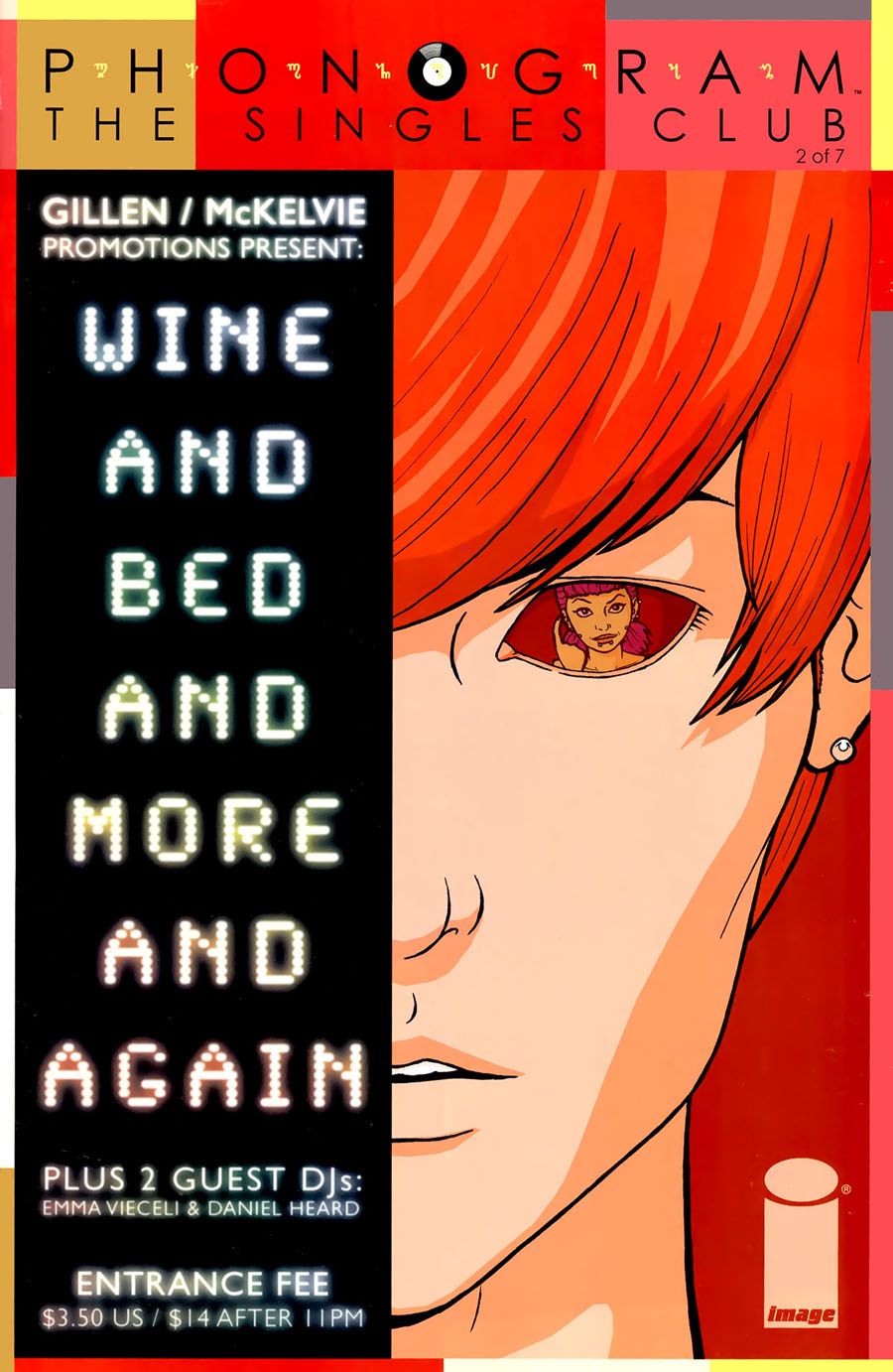What I like about "Phonogram: The Singles Club" is that it's becoming increasingly clear that this mini-series is like a collection of singles. Each single is enjoyable and fun to experience in its own right, but if you collect them into a full album, you're going to end up with something even better. With only two issues released, Kieron Gillen and Jamie McKelvie are already showing us just how some of the pieces fit together, and it's fun.
With this new issue of "Phonogram: The Singles Club," Gillen goes after the idea of music-as-curse, but in both a figurative and literal way. After all, who hasn't had a song that reminds you of a happier time? The older you get, the more people you've met, the greater the chance is that you'll have those little fragments embedded in your skull, just rattling around and waiting to surface. So the idea of a cursed song, where just hearing it makes your past object of desire appear? It's a smart twist on an old chestnut, and one that fits in well within the music-is-magic world of "Phonogram."
If you've read the first "Phonogram: The Singles Club" issue, though, you're in for a real treat with issue #2. Like #1, the bulk of the story is set in a club, with a crew of different characters arriving and interacting. So while the first issue focused on Penny, this issue is all about Marc, the object of Penny's desire and whom she asked out to dance during her spotlight. This time, though, we see that sequence of events -- as well as what some of the other characters in the first issue were up to -- through Marc's eyes rather than Penny's. It's a careful, tricky game that Gillen is playing with the writing, because he needs to find a way to have all seven stories intersect in ways that will have at least minor differences from one telling to the next, but at the same time come across as believable and have a real reason for the differences. So far? Well, I can't speak for the entire series based off of two issues, but these two fit together without a visible seam. If the other five pieces snap into the greater whole just as well, I'll be both impressed and happy.
Of course, since it's a comic drawn by Jamie McKelvie, the characters look real and trendy. He's part of a small group of artists, like Bryan Lee O'Malley, Chynna Clugston, and Paul Pope, who truly understand fashion. So everyone is wearing actual clothes; not just non-description t-shirts and pants, but beautiful checkered orange jackets, or a black and yellow striped dress, or a patterned scarf with tiny bits of fringe that is at a jaunty angle over someone's skirt. That's not to say that the rest of the comic isn't drawn well too, because it is. McKelvie does a good job with page layout and having character movement flow from one panel to the next, but it's so nice to see someone paying attention to what his characters are wearing that it's of particular note.
The two back-up stories in this issue aren't quite as arresting as in issue #1, but they're still nice. Emma Vieceli's art for "Wuthering Heights" fits both the song and the book it's based off of quite nicely, and I'll definitely have to check out her other comics that Gillen mentions in the editorial notes at the end of the issue. Daniel Heard only gets a tiny vignette to draw, but the art is so beautiful for his two pages that I could stare at the first page for hours.
If you haven't read "Phonogram: The Singles Club" yet, don't be afraid that you haven't read #1. It's just as easy to jump in here, and you'll get a full, interesting story. Just be warned that when it's all over, you'll probably want to hunt down #1 because you want more of the fun.

